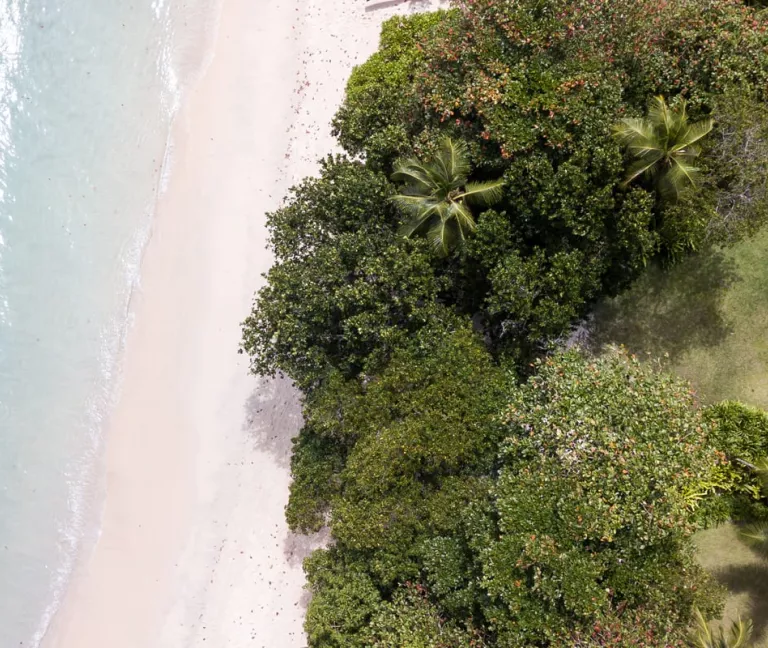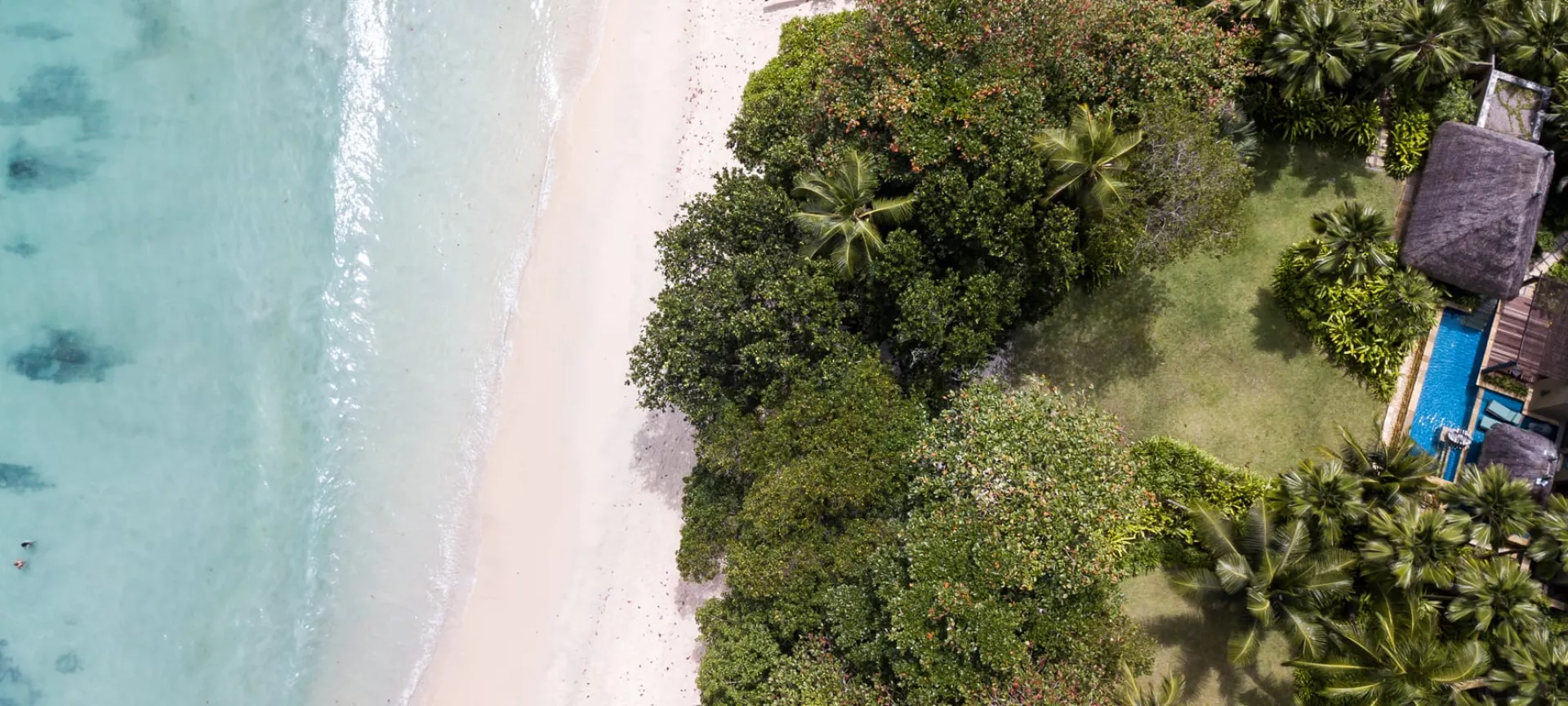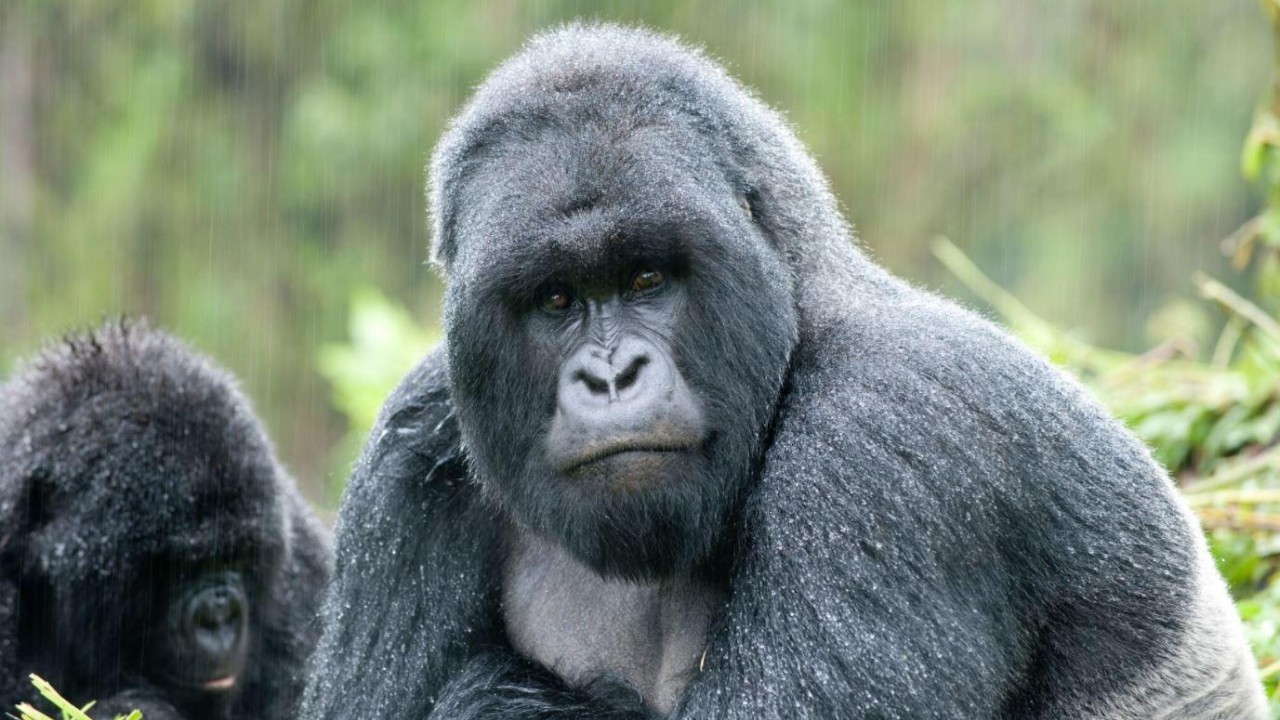
James travelled to Uganda in October 2022 to develop our collective knowledge of this East African gem.
Read his report of his journey below:
Uganda is a destination that we have known well for some time but, as with all of the countries that we offer, we are always striving to explore further to really get to grips with what is possible and what hidden gems we can include in our itineraries.
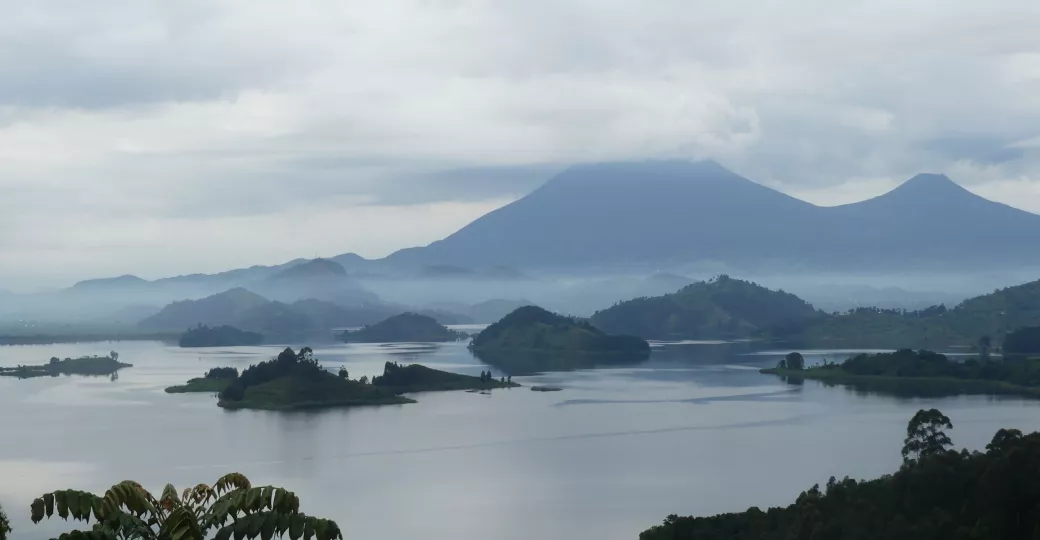
View over Lake Mutanda from Chameleon Hill Lodge
In Uganda, along with several of our other destinations, we work alongside a team on the ground (called 'groundhandlers' in the travel industry) who are destination experts in their own right, and act as facilitators when we are organising our itineraries. When Bonamy were invited on a 11-night research trip in October 2022 by our chosen groundhandler, we jumped at the chance to join and it was me, James, who was the lucky one to travel.
On the tour, we were taken through almost every single tourist destination, stopping for just one night in each lodge, whilst also visiting on average 4 more each day, and making the most of the activities on offer in each area.
It's worth just saying that the journey below is not one that we would ever design for our guests - this was a research trip aimed at seeing as much as possible in a very short timeframe, to explore new areas and check-up on lodges post-covid. We are huge advocates of travelling slowly through a country, taking time to connect with the people and areas that we have the fortune of encountering.
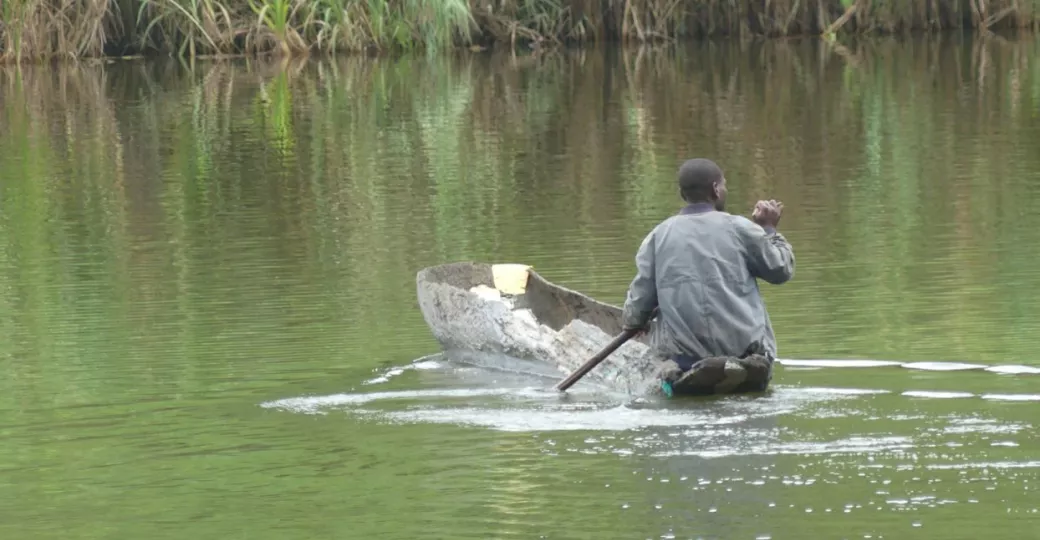
Canoeing on Lake Mutanda
After an overnight on arrival in Entebbe, meeting the other members of the group and our wonderful guide Marc who would be with us during our trip, our first destination was Murchison Falls National Park, around 5 hours drive north. Conveniently located at around the midpoint on the journey, and a great destination regardless, is Ziwa Rhino Sanctuary - home to the only wild rhino in Uganda.
Sadly, the rhino population in Uganda was decimated in the 90s. Ziwa is a non-profit project aimed at eventually reintroducing these amazing animals back into the wild. With around 38 rhinos at the sanctuary at the moment, the population is growing quickly and the plan is to move some of them up to Murchison Falls in around 4 or 5 years to begin the next phase of the project.
For tourists looking to learn more about the Southern White Rhino, and have the chance to track them on foot, Ziwa is a really great stop-off on this journey. We were lucky enough to spend around an hour with a family of 5 rhino before heading back to the research centre to learn more about the project and have a bite to eat. It was such a humbling experience to share an hour with these animals, and it's incredible to see how far this project has come in such a short time.
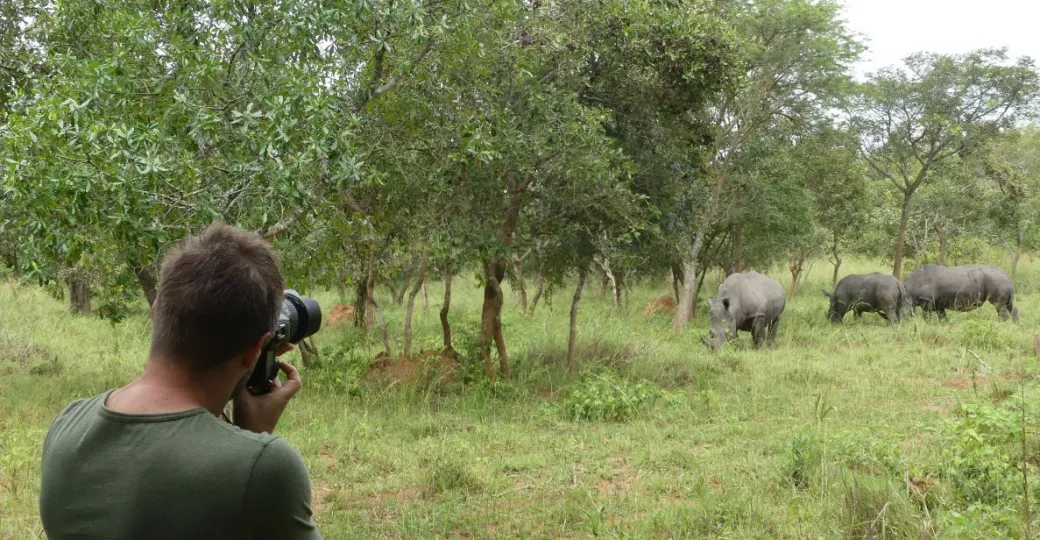
Walking with rhino at Ziwa Rhino Sanctuary
Arriving at the Murchison Falls itself that afternoon, we marvelled at the mighty force of the most powerful waterfall in the world. The River Nile is forced into a narrow channel just 7 metres wide before plummeting 45 metres into the abyss below and finally entering Lake Albert. It's quite a phenomenal sight. We then made our way south to two nights at Murchison Falls River Lodge and Nile Safari Lodge, just 5km south.
Our safaris in Murchison Falls National Park over the next couple of days were nothing short of fantastic. The diversity of the park is really outstanding - the River Nile neatly divides the park into two and offers the opportunity for boat cruises up to the Falls, or down towards the Nile Delta. The ecosystem of the landscape is a lovely blend of bush and open savannah, not too dissimilar to the plains of Kenya and Tanzania.
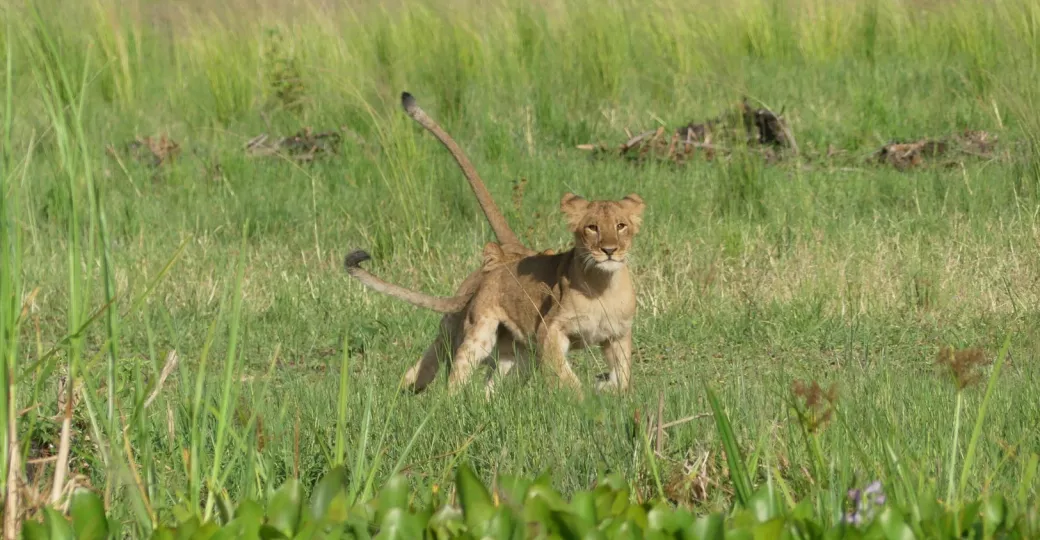
Lion cubs playing in Murchison Falls National Park
Moving on from Murchison Falls, we headed southwest towards the undulating hills, thick vegetation, and crater lakes around Kibale Forest National Park for two more nights. Starting off at Primate Lodge, a mere stone's throw from the Chimpanzee Trekking HQ, we were treated to a truly memorable hour the following day sat watching these remarkable primates as they went about their morning routine.
As we were about to leave to make our way back to the lodge, a female chimpanzee made her way down beside us in the jungle and, in complete calmness, she nursed her baby and allowed her 3-year-old to play around in the trees alongside. Memories that will last a lifetime!
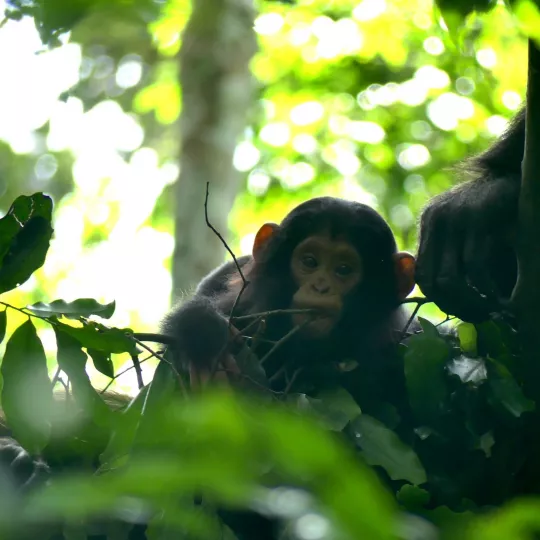
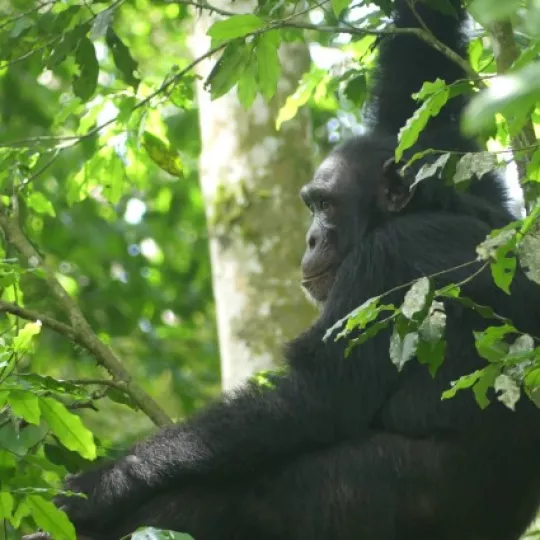
Chimpanzee trekking in Kibale Forest
There are three areas in Uganda where you can trek to see chimpanzee - Kibale Forest, Budongo and Kyambura Gorge. All have their own benefits and would suit certain groups and individuals better than others. We will advise on which of the three areas would be most suitable for your itinerary.
After our night at Primate Lodge, we moved across to Ndali Lodge via a handful of quick visits to other properties in the area, and an afternoon walking safari through Bigodi Swamp. Ndali Lodge is such a special place and, despite only spending a short amount of time there, it really left a great impression on me.
Run by the wonderfully charming Aubrey, his wife Clare, a superb team and their four dogs, the lodge commands outstanding views over a beautiful crater lake and would be a great place to stay during any visit to the Kibale region. Aubrey was in the process of building a croquet lawn and clay tennis court when we visited, and word has it he'll be hosting his very own tennis competition in 2023. Team Bonamy are on standby!
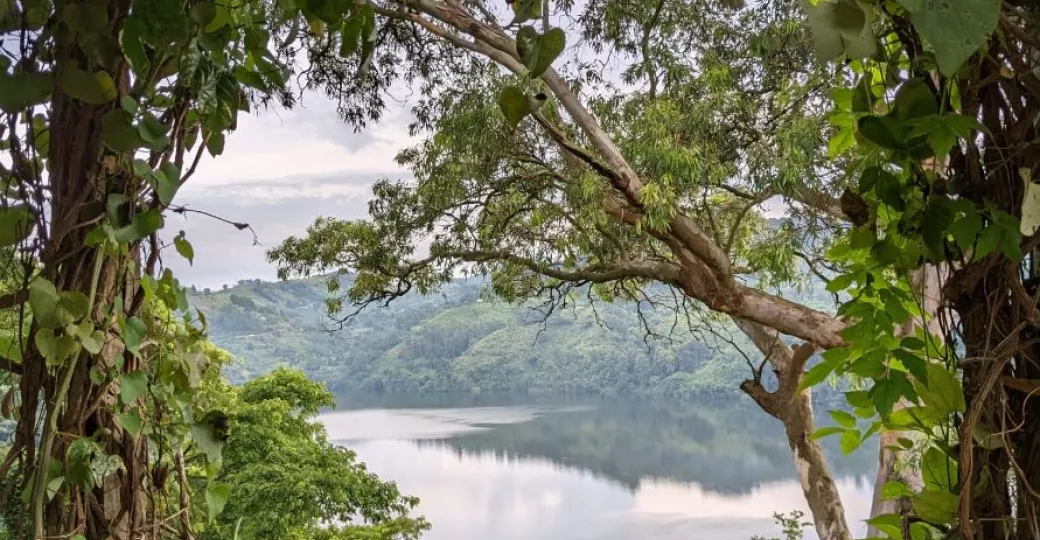
Breakfast view from Ndali Lodge
Up and out early the next morning, we made our way west and towards Queen Elizabeth National Park. We began the day by visiting a number of other lodges before a boat cruise down the Kazinga Channel in the northern sector of the park.
The experience was really top class, and we were treated to a whole host of birdlife, reptiles, herds of buffalo and a pair of juvenile elephants playing in the water close to the riverbank.


Boat cruise down Kazinga Channel
Moving through the park during the day visiting a number of other properties, we finally arrived at our overnight destination as dusk fell - Ishasha Wilderness Camp in the southern sector of the park. Ishasha is a true bushcamp set right down on the bank of the Ntungwe river and is in a ripe area of the park for game viewing.
The safari the next morning was really good and we saw leopard (the debate around how many we saw exactly continues!), herds of elephant, thousands of kob (Ugandan antelope), plenty of families of warthogs, plus a whole host of other species.
Moving onwards, we drove south (via a quick visit to a fascinating pangolin rescue centre) to Bwindi Impenetrable Forest, home to a stronghold of endangered mountain gorilla. Climbing in altitude up to Buhoma village at circa 2,000m above sea level, we bumbled through rural farming villages draped over dramatic ridges and on mountainsides, in scenery that drew similarities to Jurassic Park.
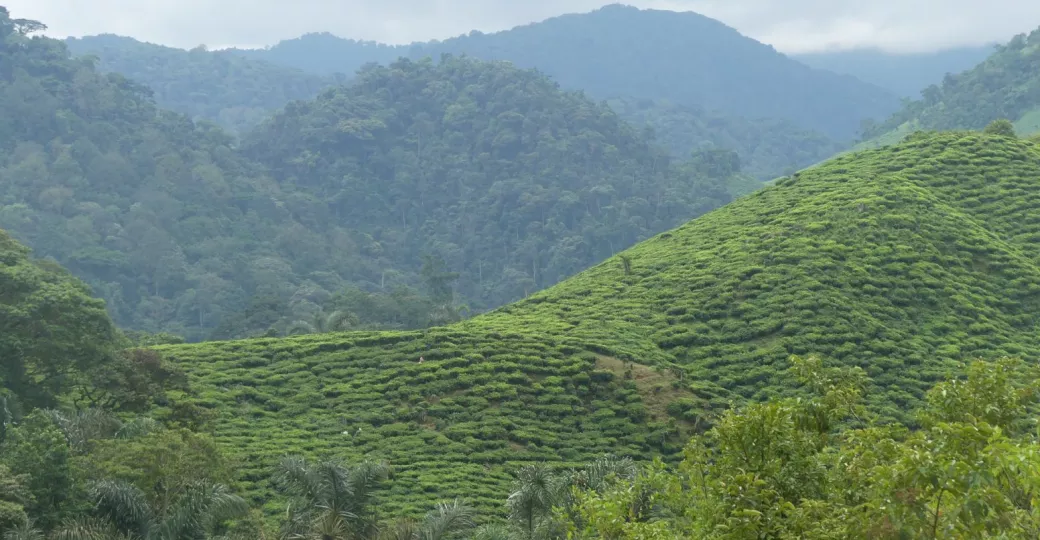
Farmland adjacent to Bwindi Impenetrable Forest
Trekking to see these magnificent great apes is, more often than not, the main draw for travellers visiting Uganda, and Bwindi is where over 90% of these travellers see them. In total, there are around 20 habituated families of mountain gorilla in a small pocket towards the far southwest of the country, 19 of which are split between 4 sectors of Bwindi Impenetrable Forest (each sector conveniently being positioned at each corner of the forest). The final family are found elsewhere - I'll explain exactly where further down this blog!
Habituation of new families takes several years, and spending time with semi-habituated families is an option for more adventurous guests, where you would typically spend 4 hours with the gorillas, rather than just 1 hour with habituated ones. The same options are possible with chimpanzee too. While this does seem very appealing, spending time the semi-habituated families can be much more demanding as the apes are more skittish and tent to move through the forest much more (and my goodness they move quickly!).
Our time in the north-western Buhoma sector was relatively short-lived as we visited even more lodges and a fantastic not-for-profit programme in the area before hiking through the forest to the south-western sector of Nkuringo the following morning.
The hike - The Ivy Trail - is an old road through the forest which was used by the Batwa nomadic hunter-gatherer people who lived off the forest prior to their eviction in the 1990s when Bwindi was protected. The Batwa are still present in the area and it is possible to spend time with them to learn how they lived, and listen to their stories. As a tourist, hiking The Ivy Trail is a great way to understand more about the forest and learn directly from the superb guides about the history and wildlife that inhabits this unique part of the world.
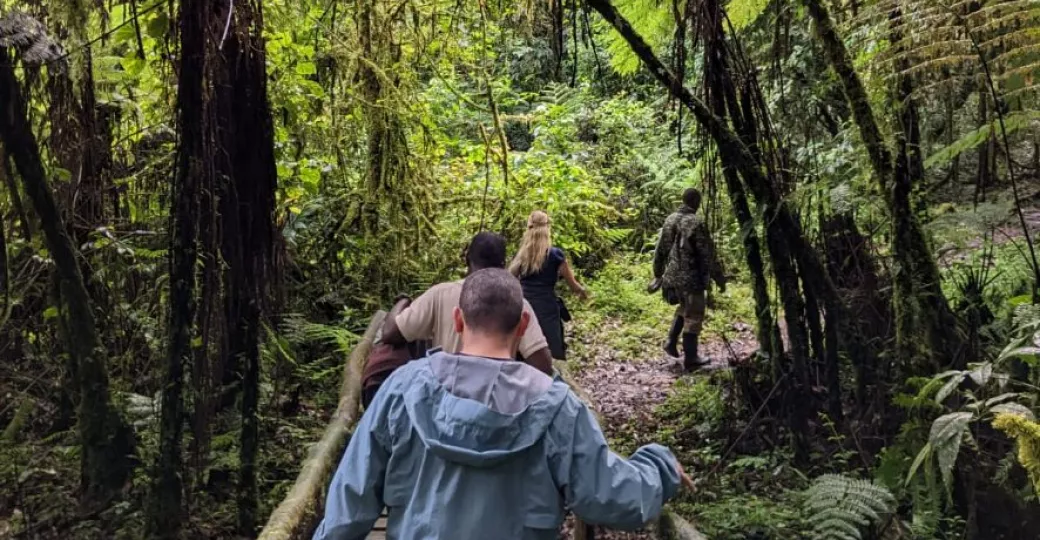
Trekking the Ivy Trail
The following morning was our chance to delve back into the forest in search of mountain gorilla from the southern, Nkuringo sector. Each of the four trekking sectors in Bwindi is different and would be best suited to certain groups - it's really essential that you choose the right one. The Nkuringo sector is known to be one of the most challenging, and would be perfect for the more active traveller, someone who wanted a bit of a challenge!
Scrambling up and down very steep banks, slipping through grasses and quietly walking past bees' nests so not to disturb them, our hike to see the gorillas was pure excitement. Being one of the more difficult gorilla trekking hikes, in my opinion, made the experience all the more special - the reward is always higher when you have worked harder for it!
We were also very lucky with our trek. Our family, the Nkuringo family, is 13-strong and has two silverbacks - a very good size. when we saw our first glimpse of the family, there were only fleeting glances through the long elephant grass. However, after 30 minutes, the grasses had been parted by the gorilla and we were treated to a fantastic show by the family.

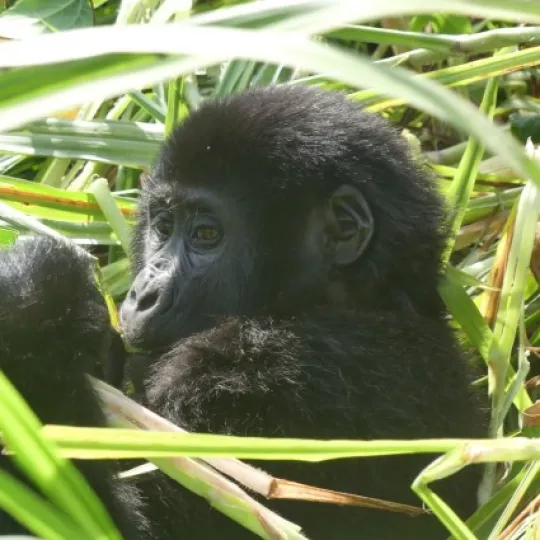
Gorilla trekking in Nkuringo
With adolescents playing in the trees, babies riding mother's backs, extremely comfortable silverbacks sitting mere metres from us, we really couldn't have asked for more. The highlight, for me at least, was sitting at eye-level across from the big silverback for what must have been 10-minutes as he groomed himself, ate a stem of elephant grass, seemingly pondered a thought whilst scratching his chin, and then delicately picked something out of his teeth, all the time pausing to seemingly check that I was still with him and watching him. A beautiful moment.
We always tell our guests to take a few photos when they're with the mountain gorilla, but to then put down their cameras for as long as possible. Regulations dictate that you have just one hour with these amazing animals - while your photos last forever, the memories you take from the experience are worth so much more.
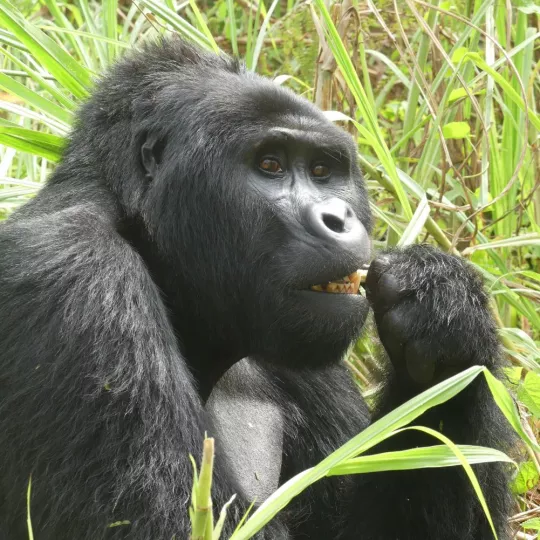
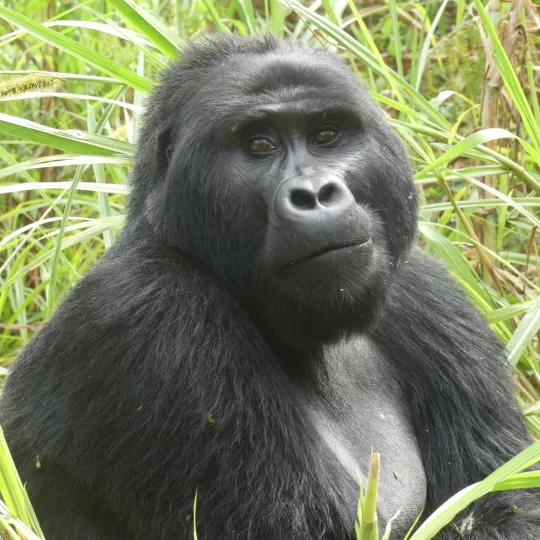
Gorilla trekking in Nkuringo
That evening we toasted our trek with a couple of bottles of Nile (beer, not river water!) and had an early night. Our whistlestop tour wasn't slowing down for one second!
We left early again the next morning, longing for a lie-in, for another handful of lodge visits before we finished at Mount Gahinga Lodge up in Mgahinga National Park, right in the nook where Uganda, Rwanda and the DRC meet. Mgahinga is where the aforementioned 20th habituated gorilla family are found. Part of the same larger Virunga Mountain Range as Bwindi, Mgahinga is around 2 hours further south, and is in the same area of Afromontane forest in which the entire Rwandan mountain gorilla population is found. Mgahinga is just the very small corner of this forest which lies in Uganda.
As there is only one habituated family on the Ugandan side of the forest, there is only capacity for one lodge, and what a place Mount Gahinga Lodge is. We were treated to a relatively quiet afternoon enjoying the impeccable service, food and drink. Despite being on the equator, at 2,300m above sea level, it does get quite chilly in the evenings so the 2 (!) hot water bottles in our beds were very, very welcome.
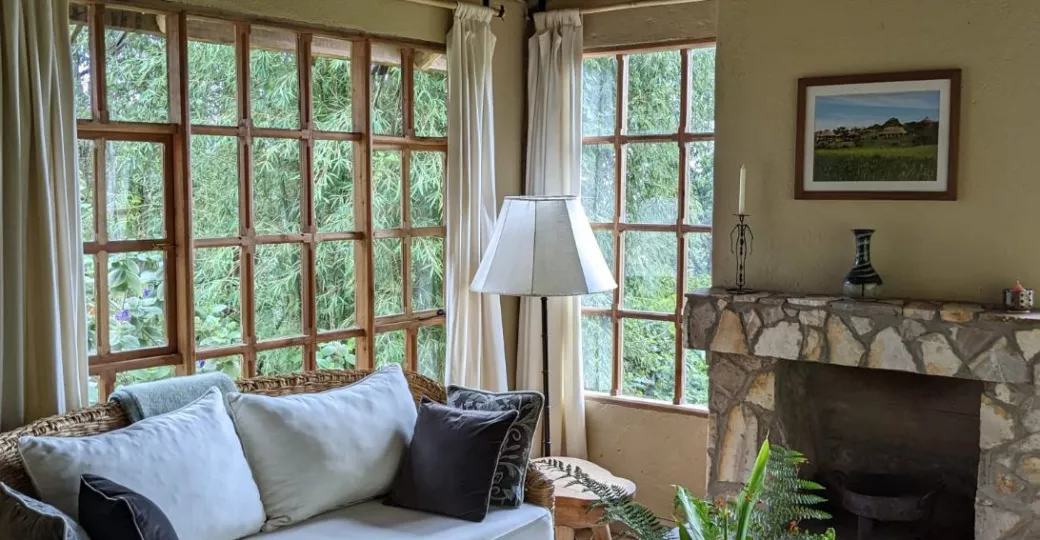
Mount Gahinga Lodge
Moving on early the next morning we made our way down to our final destination via a quick pitstop in Lake Mburo National Park. We ended our trip with a night back on the river, near to the (heavily disputed) source of the River Nile - Jinja. Wildwaters Lodge is set sprawled on an island in the middle of the river as it thunders out of Lake Victoria and begins its way northwest up to Lake Albert. The lodge is a fantastic place to unwind after a typically action-packed Ugandan holiday, however does also offer a whole host of activities on the river for the adventurous type.
Sadly, we didn't have any time to get wet and wild on the river and we made our way back to Entebbe early the next morning for a debrief and our departing flights. Having another night at Wildwaters to relax would have been ideal, but, as we have to reason with loved ones back home, this is a work trip...

View down the River Nile
All in all, the trip was a huge success and, having seen over 40 properties across the country in total, all at the highest end of the quality scale, it has hugely developed our collective knowledge of Uganda and how to best design itineraries for you.
More than anything, it was the incredibly humble, beautiful people of Uganda that left the longest-lasting impression on me, and I am very excited to not only travel back myself, but to help design trips for you all.
These trips are a huge benefit to us as a business, and we hope to you too. Some of the lodges and camps I visited were looking slightly tired, which has introduced some thoughts and ideas for future planning, and how we set expectations. During this journey, we drove the entire route which is not uncommon, but it does include some long days in the car. There is the option of flying between some of the different areas in the country to save some time, and this is something that we'd consider when planning your trip.

The gang, hot & sweaty post gorilla trek in Nkuringo!
If this blog has inspired you to travel to Uganda to experience some of what has been described here, please do get in touch. We'd be delighted to chat and understand which areas of this wonderful country would appeal most to you, and design a bespoke itinerary with you.
Huge thanks are owed to our amazing Ugandan ground-handlers and our guides for making this trip possible.
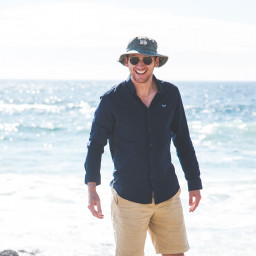
James Handley
Born and bred in the South of England, James is Bonamy’s intrepid traveller. When not honing his skills in London over the last decade, he's spent much of his time on self-planned expeditions and a...
View profileNever miss a notebook entry with our newsletter

